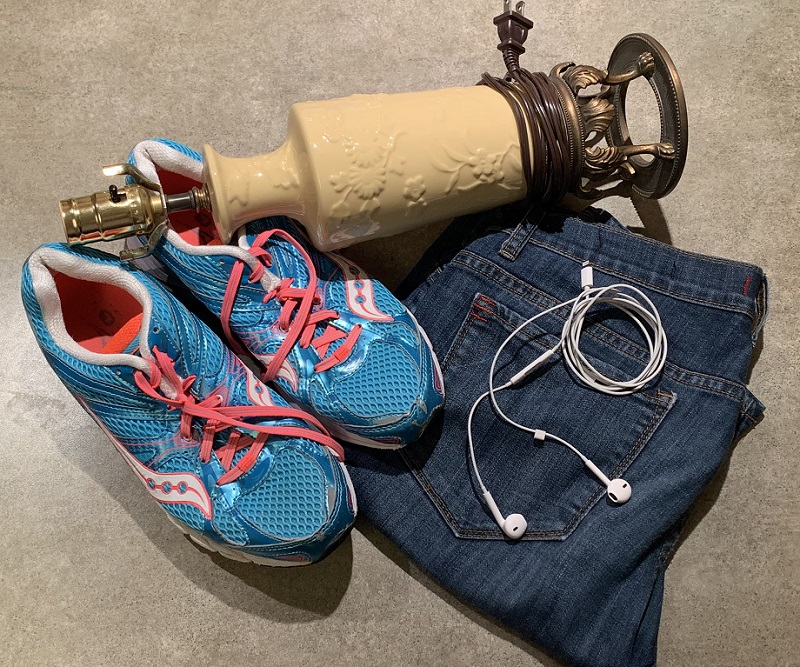Studying Our Stuff: Life Cycle Analysis Activities for Grades 6-12
Written by Pamela Wasserman, Senior Vice President for Education | Published: March 21, 2022
On a recent Sunday, I did a bit of shopping for a few personal and household items—a shower curtain liner, face cream, and a dog toy—all without leaving my couch. Like many during this pandemic period, I’ve become part of the “homebody economy”—spending more on stuff that gets dropped off at my house and less on experiences out and about in the world.
Our new relationship with “stuff,” and the hiccups of pandemic-fueled supply chain issues, have also increased public awareness of what goes into getting all these items to retailers and, ultimately, to us. From extracting raw materials to manufacturing, transportation, consumer use, and disposal, all of our stuff has a life cycle. Along the way, this life cycle has implications for the workforce that produces the goods, and for the environment.
With a doubling of the global population and a 33-fold increase in world consumer spending over the past 50 years, the sheer amount of stuff has skyrocketed, filling our homes and landfills. As part of our PopEd curricula, we wanted secondary students to learn a little bit more about their stuff—the journey it took to get to them and where it will go next. Five years ago, we started developing classroom activities focused on life cycle analyses (LCA) to help students appreciate the impacts of some of their favorite consumer items (e.g. fast fashion and mobile electronics) on environmental sustainability, human health, the economy, and social justice.
That led to the development of The Secret Life of Stuff for grades 6-8 and The Secret Life of Tees for grades 9-12. Both are STEM-based activities that also bring in social studies content, for truly interdisciplinary learning experiences. These lessons also emphasize student inquiry, letting curiosity guide the discovery process.
 In The Secret Life of Stuff, students compare the life cycle stages of four everyday products: jeans, sneakers, earbuds, and a small lamp. Working in groups, they first hypothesize which of the four products will have the smallest eco-impact and why. They then assess and rank the four items according to their environmental impact along the five steps of their life cycles: materials extraction, manufacturing, distribution, usage, and disposal. Students then formulate a plan for decreasing the impact of one of the products by altering one stage of its life cycle.
In The Secret Life of Stuff, students compare the life cycle stages of four everyday products: jeans, sneakers, earbuds, and a small lamp. Working in groups, they first hypothesize which of the four products will have the smallest eco-impact and why. They then assess and rank the four items according to their environmental impact along the five steps of their life cycles: materials extraction, manufacturing, distribution, usage, and disposal. Students then formulate a plan for decreasing the impact of one of the products by altering one stage of its life cycle.
For older students, we also bring in social and environmental justice issues related to the product’s life cycle. In The Secret Life of Tees, teens examine the journey of a single t-shirt. Using guided research and their own data, they determine the impacts of the t-shirt during each of the five stages of its life cycle.
 For each stage, students read articles and/or watch videos to provide context. In Stage 1 (materials), they explore pros and cons of different t-shirt materials including cotton, rayon, and polyester. In Stage 2 (manufacturing), they learn about the countries where their apparel is made and the typical working conditions of the garment workers in those locations. Stage 3 (distribution) covers shipping impacts and regulations. Stage 4 (usage) focuses on the environmental impacts of repeated laundering of the t-shirt. Stage 5 (disposal) addresses “fast fashion” and the fate of used clothing that gets exported to low-income countries.
For each stage, students read articles and/or watch videos to provide context. In Stage 1 (materials), they explore pros and cons of different t-shirt materials including cotton, rayon, and polyester. In Stage 2 (manufacturing), they learn about the countries where their apparel is made and the typical working conditions of the garment workers in those locations. Stage 3 (distribution) covers shipping impacts and regulations. Stage 4 (usage) focuses on the environmental impacts of repeated laundering of the t-shirt. Stage 5 (disposal) addresses “fast fashion” and the fate of used clothing that gets exported to low-income countries.
As in the middle school version, students are asked to create an action plan for participants in the life cycle—individual consumers, governments, companies, or non-profits—to reduce the environmental footprint of that t-shirt. They consider questions such as: When and how does a consumer have the most power to change the t-shirt’s impact? What are some of these possible changes? What would be the “perfect” t-shirt? (How would it be made, shipped, and disposed of?)
One of the outcomes of an LCA is to gain a keener appreciation for the stuff that we acquire and to make informed choices as consumers, considering both sustainability and ethics. Some students have taken their learning a step further by advocating for changes in product development, marketing, and disposal through their videos submitted to our World of 7 Billion contest. Last year’s winners included videos on “carbon tagging” everyday consumer items, child labor used in mining mica for cosmetics, and ways to cut down on e-waste.
PopEd is continuing to add to our teaching resources related to personal consumption. New student readings on the impacts of “fast” and “ultrafast” fashion are now part of our middle and high school curricula, as is an updated case study on the world’s largest e-waste dumping site.
For more information about PopEd curriculum, visit PopulationEducation.org.
